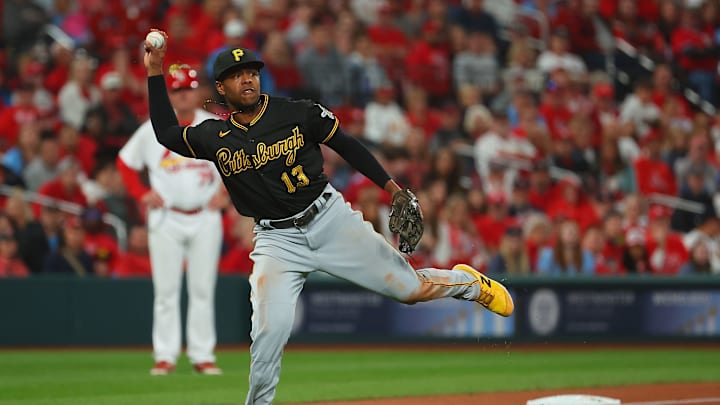Infield Utility Options
Jared Triolo might be the most exciting utility man the Pirates have had in a while. Triolo has steadily climbed his way through the Pirates' org, going from a second-round pick to performing well at Double-A last year. Although he hasn't played at Triple-A yet, the Pirates felt confident enough to give him a 40-man roster spot to protect him from the Rule 5 draft. Plus, given he's entering his age-25 campaign, he's definitely at an age where he needs to be in the major leagues sooner rather than later. In 495 plate appearances, Triolo batted .282/.376/.419 with a .356 wOBA and 121 wRC+. That also includes a 12.7% walk rate and a 17.6% strikeout rate. Triolo has had a wRC+ of 110 or greater and K% below 20% in each of his three minor league seasons. Triolo also did great in the summer, owning a .878 OPS, .385 wOBA, and 140 wRC+ from June onward. He also saw a major uptick in power when the weather heated up, as his ISO went from just .043 in April-May to .194 after the start of June.
Triolo is the Pirates' best defensive infield prospect. He has mainly taken up third base but has also played a handful of games at shortstop throughout his minor league career. He's also stated he's willing to take up the right side of the infield as well. Triolo played a fair amount of outfield in college and started to get reacquainted with the outfield grass this year, playing 62.2 frames in center field for the Curve. Certainly could see him play all over the diamond next season.
Tucupita Marcano will also open the year in a utility role for the Bucs. The lefty-hitter didn't do great last year, batting .206/.256/.306 with a mere 57 wRC+. For a batter whose biggest skill was avoiding the strikeout, Marcano had a below-average 24.9% strikeout rate to go with a poor 5.6% walk rate. Though it's worth noting, this was only in 177 plate appearances, and he did well for the Pirates' Double-A and Triple-A affiliates. Across 241 plate appearances, Marcano batted .291/.388/.443 to go with a .370 wOBA and 126 wRC+. He struck out a lot less often with a 17.4% strikeout rate and was much more patient at the plate with a 14.4% BB%. Marcano can play just about anywhere the Pirates need him to. The only positions he didn't play were center field, first base, catcher, or pitcher.
You have to remember that Marcano had a very abnormal track to the major leagues. He ended the 2019 season at Low-A. The 2020 minor league season was canceled, so Marcano didn't get an opportunity to play competitively. However, the San Diego Padres still had to fast-tracked him straight to the major leagues. He initially made the Padres' '21 Opening Day roster because of an injury to Trent Grisham, but then started to play a more prominent role when Fernando Tatis Jr. missed a small amount of time early into the year. After that, the Padres optioned Marcano back to Triple-A instead of Double-A. He only got to play at Double-A this year, where he excelled. This would be like if the Pirates took Tsung-Che Cheng, who has a similar profile to Marcano and played at A-Ball all last season and made him their starting second baseman to open 2023. Patience could pay off for the Pirates with Marcano this year.
